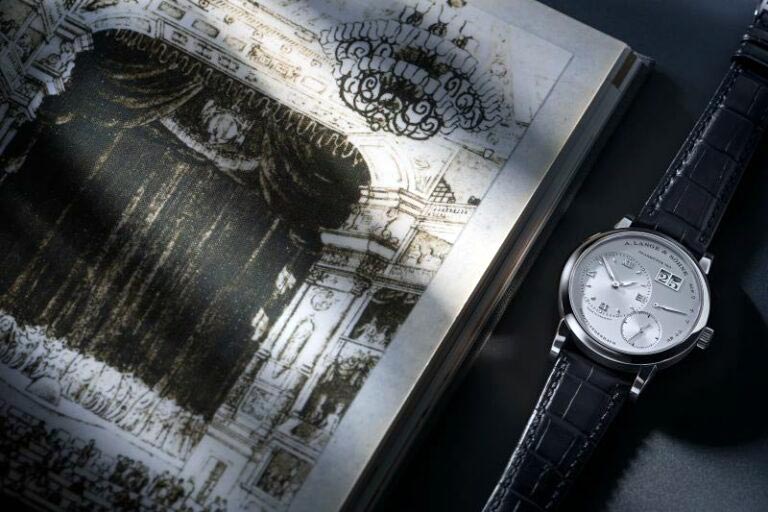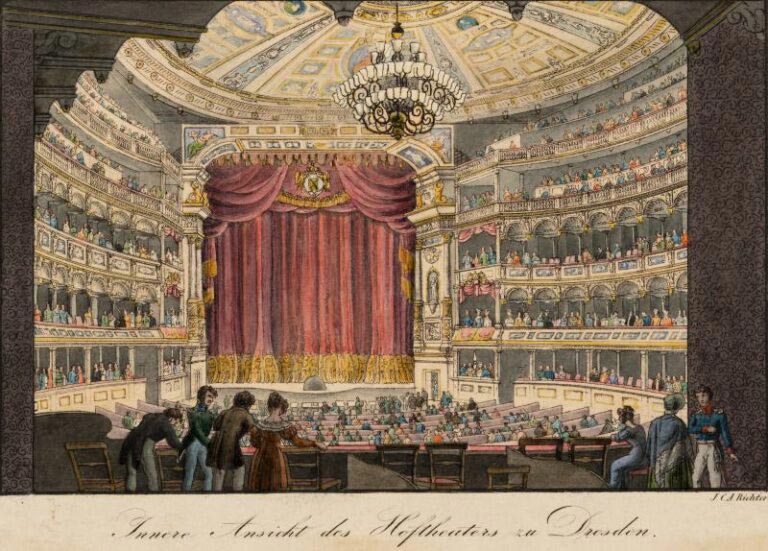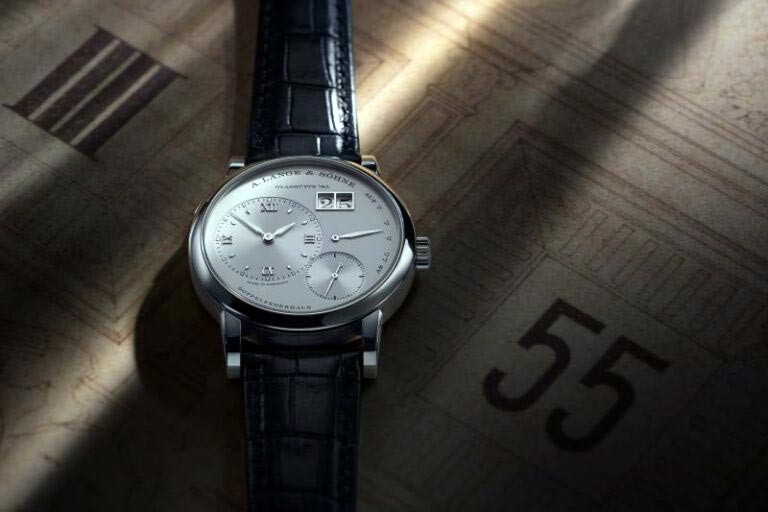What a Stage Clock and the Iconic Lange 1 Have in Common

A technical masterpiece with a long history
It was completely destroyed twice and rebuilt twice: the Semperoper opera house in Dresden, Germany. Home of the Sächsische Staatsoper Dresden and the concert hall of the Staatskapelle Dresden, the 180-year-old opera house is renowned for its beautiful baroque architecture and impressive history of premieres, including major works of Richard Strauss and Richard Wagner. From the very first performance, which took place on 12 April 1841, the Semperoper has delighted its audiences not only with first-class concerts and operas but also with the sophisticated showcase of a more mechanical nature: its stage clock with an extra-large digital display of the time in five-minute increments, the aptly named Five-Minute Clock.

An iconic silhouette
This horological masterpiece was the brainchild of Johann Christian Friedrich Gutkaes, a trained astronomer, mathematician and highly skilled clockmaker. He had been assigned by the Saxon court “to create a clock that the world had not seen before – a curiosity among its kind”, which, of course, had to be as accurate as a chronometer. At that time, Dresden’s clockmakers’ guild was known for high precision and quality far beyond the borders of the Saxon metropolis. Designing a timepiece of such sheer size and capable of high accuracy was a major challenge. Gutkaes opted for an innovative construction. The design consisted of two cloth-covered rollers with large numeral prints. They were driven by a gear train and framed by a panel with two large windows. The left one displayed the hours with Roman numerals from I to XII, while the one on the right indicated the minutes in increments of five using Arabic numerals from 5 to 55. Since there are no construction drawings preserved, one can only speculate why Gutkaes used number rollers for the design. The most plausible explanation is that the display had to be legible all the way to the rear rows of seats, even when it was dark in the auditorium during the performances. The rollers, which measured about 160 centimetres in diameter, allowed for the creation of numerals that were about 40 centimetres high. The space in the proscenium above the stage was not sufficient for a similarly easy-to-read analogue display. Gutkaes designed and built the clock together with his employees, including his partner and later son-in-law, Ferdinand Adolph Lange.

Reborn from the ashes
In 1869, the Semperoper and the stage clock were completely destroyed in a fire. Ludwig Teubner, an apprentice and employee of Gutkaes who was familiar with the original design, was commissioned to make a new stage clock when the building was reconstructed. His piece combined the elements of traditional tower clock construction with those of classical clockmaking. It was produced in Teubner’s workshop and the Zachariä tower clock factory in Leipzig. Teubner, his son-in-law Ernst Schmidt and Schmidt’s son Felix maintained the second clock over three generations. Thus, the knowledge of its technology was preserved until well into the 20th century.
The operating principle has also been kept alive thanks to a masterfully executed construction model made on a scale of 1 : 10 that is today on display at the Royal Cabinet of Mathematical and Physical Instruments in Dresden. After the Semperoper was completely destroyed once again during World War II, a new clock was commissioned as part of the reconstruction. Based on Teubner’s construction model, the team of experts led by engineers Klaus Ferner and Harry Julitz reconstructed his original Five-Minute Clock to its former glory. It was installed in February 1985 after the building works had been completed and has delighted audiences since the ceremonial reopening of the opera house.

A symbol of the renaissance of Glashütte’s fine watchmaking
A few years later it once again played a starring role, however in a very different timepiece. After Germany’s reunification, Walter Lange, the great-grandson of Ferdinand Adolph Lange and great-great-grandson of Johann Christian Friedrich Gutkaes, revived his family business, which had been in an involuntary hiatus of over 40 years in the former German Democratic Republic. On 24 October 1994, Walter Lange and his partner Günter Blümlein presented the first four timepieces of A. Lange & Söhne’s new era to a selected audience in the royal palace of Dresden. Among the wristwatches was the now iconic Lange 1. As a nod to the noble tradition of Saxon watchmaking, its outsize date through two windows is inspired by the stage clock of the Semperoper. Together with the signature off-centre dial layout, this famous hallmark has been a part of all Lange 1 models since then and has been considered as a symbol of the fine art of contemporary Glashütte horology.
